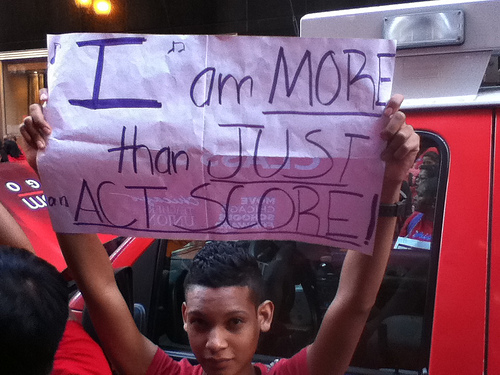Reposted from the Jobs With Justice blog
One of the most striking features of the Chicago teacher’s strike was the level of community support for the teachers. Contrary to public expectations, the strike turned into a social mobilization around education rather than a battle for the special interests of teachers. This feature did not come out of nowhere, but actually reflected an on-going effort to shift the direction of labor unionism in America, and in this case, labor unionism among teachers.
As successful as teacher organizing has been over the last fifty years, there has been an increasing gap between teachers and communities. This came to catastrophic proportions in the disastrous 1968 New York City Teachers strike, which pitted African American and Puerto Rican community-based organizations against the largely white United Federation of Teachers (affiliated with the American Federation of Teachers) over the issue of community control of schools. While the teacher’s unions became increasingly successful in winning a better living standard for their members, they frequently became a source of resentment for many parents and community-based organizations who no longer saw the unions as being at the vanguard of the struggle for genuine education reform.
It is in this context – after years of struggles within the American Federation of Teachers and the National Education Association – that the elements of a more social justice-oriented unionism have begun to emerge. New, progressive leaders have taken the helm of several teacher’s unions, leaders who recognize that teachers cannot fight their battles alone. Not only do teachers need allies, but the brand of unionism practiced by teachers must share a deeper connection to the larger struggle for progressive education reform, an education reform that collaborates with teachers and parents, and focuses on the needs of the students. The shift represents a critical movement within teacher’s unions, and a shift from focusing exclusively on the needs of members to focusing on the larger challenge of real education reform.
The battle in Chicago was representative of an effort not only to democratize the Chicago Teachers Union, but also to place the it on the front lines of the fight for an education system focusing on the needs of the children and their teachers, rather than the needs of corporations. Corporate America–in both its liberal and conservative clothing–has been actively seeking to alter public education so that it utilizes inappropriate private sector methodology to teach our children. That, combined with an effort to link the school systems with the needs of the so-called free market, has created a school culture where critical thinking is not promoted, but test-taking is.
Regardless of the specific outcomes of the Chicago teacher’s strike — and surely we can all agree that getting kids back in school and teachers back to work is a good thing — it was an inspiring effort in support of the fight for education reform to be carried out in a new, innovative, and pro-people direction. And for that, our hats should go off to the teachers and parents of Chicago who — despite pervasive media and public sentiment against them – stood tall, and insisted that another road for education is not only possible, but incredibly necessary.

